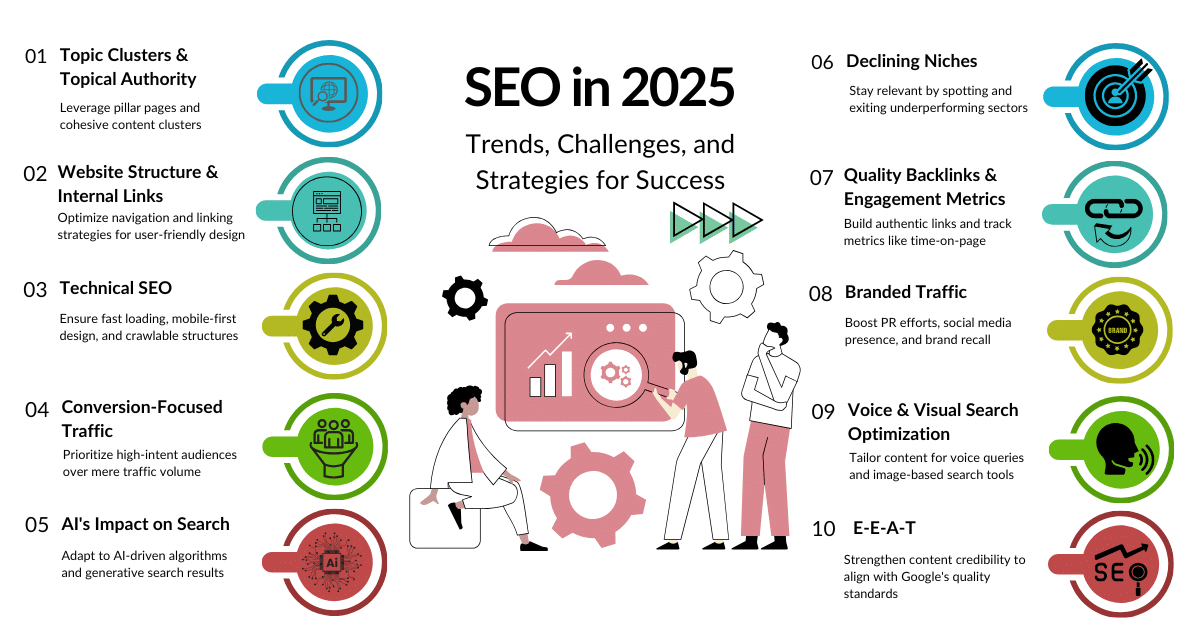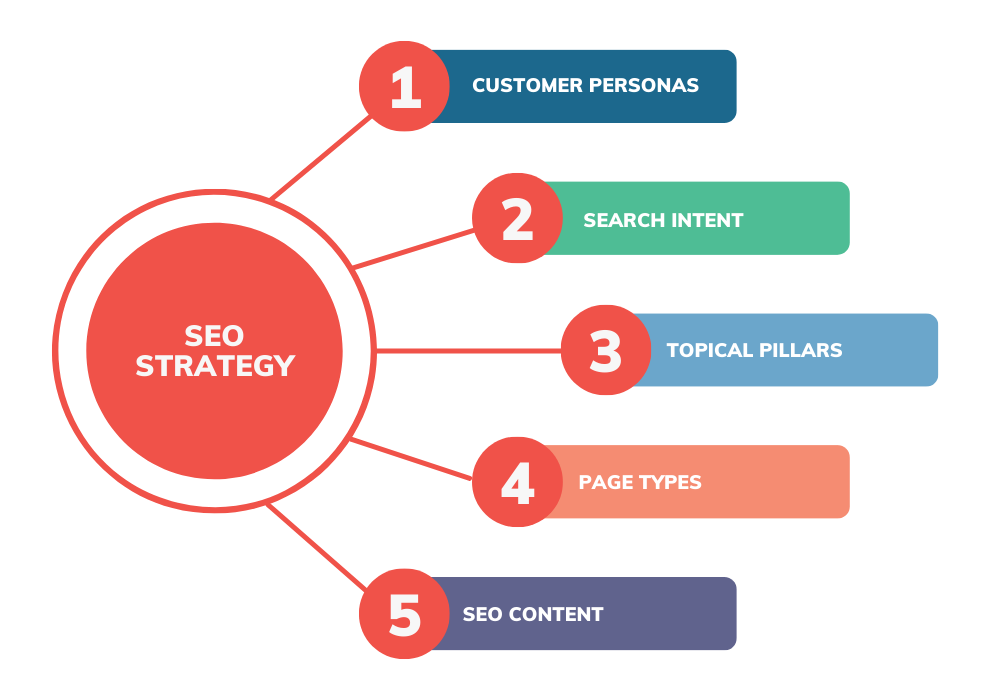What is SEO?
Search Engine Optimization (SEO) is the process of structuring and optimizing a website, blog, or e-commerce platform so it appears prominently in search results on Google, Bing, or other search engines. The ultimate goal is to increase organic traffic, improve brand visibility, and build user trust without relying only on paid ads.
In 2025, SEO has become more advanced, more competitive, and more user-focused than ever before. Let’s break down the key elements that shape SEO today.
The Future of SEO in 2025
1. Advanced AI and Machine Learning Integration
- Google’s algorithms are fully AI-driven, meaning they can understand context, tone, and accuracy.
- Content must read naturally and answer queries like a human conversation.
- Authentic sources, verified data, and original insights are now mandatory to gain visibility.
2. Search Intent Analysis
- Search intent is the foundation of modern SEO.
- Example: “Why sleep is important” (informational) vs. “How to improve sleep” (practical guidance).
- Segmenting content by informational, commercial, navigational, and transactional intent is the core strategy for ranking.
3. Mobile-First and Core Web Vitals
- Over 70% of global web traffic in 2025 comes from mobile.
- Websites must be fast, mobile-optimized, and secure (HTTPS).
- Core Web Vitals—LCP, FID, CLS—directly influence rankings. Poor performance here means lost visibility.
4. Voice Search and Multi-Modal SEO
- Voice search queries like “Where’s the best coffee shop in Dhaka?” are rapidly increasing.
- Google Lens, image search, and video search are now standard parts of SEO.
- Proper use of ALT tags, video schema, and natural voice keywords is essential.
5. EEAT: Experience, Expertise, Authoritativeness, Trustworthiness
- SEO is no longer just about keywords—it’s about credibility.
- Show author bios, credentials, media references, and real-world case studies.
- In fields like health, finance, and technology, EEAT is a ranking deal-breaker.
6. Local SEO and “Near Me” Optimization
- Local queries like “restaurant near me” or “SEO expert in Dhaka” dominate search.
- Optimizing Google Business Profile (GBP), adding local schema markup, and earning local backlinks are essential.
7. Semantic SEO and Topic Clusters
- Ranking is no longer about one keyword—it’s about covering a topic thoroughly.
- Example: “What is SEO?” should connect to On-Page SEO, Off-Page SEO, Technical SEO, Local SEO through internal links.
- Topic clusters establish authority and improve overall visibility.
8. Social Signals and Content Sharing
- Shares, mentions, and engagement from platforms like LinkedIn, X (Twitter), Facebook, and Instagram increase content authority.
- Google is placing more weight on social signals in 2025.
SEO 2025 – Quick Summary Table
| Factor | Why It Matters | What to Do |
|---|---|---|
| AI & Machine Learning | Google AI-driven ranking | Use natural language, cite data |
| Search Intent | Match user needs | Create content for different intents |
| Core Web Vitals | Direct ranking signals | Optimize LCP, FID, CLS |
| Voice / Visual Search | New search trends | Add ALT tags, schema, voice keywords |
| EEAT | Trust + credibility | Author bio, certified references |
| Local SEO | Top for business growth | GBP, schema, local backlinks |
| Semantic SEO | Topic depth matters | Build interlinked topic clusters |
| Social Signals | Boosts brand authority | Publish shareable content |
Conclusion
By 2025, SEO has evolved far beyond keyword stuffing or backlink hunting. It’s now a holistic strategy built on trust, speed, user intent, and authentic value.
Websites that:
- Deliver fast, mobile-optimized performance,
- Publish trustworthy, experience-backed content, and
- Engage people across social and local platforms
…will dominate the search results.
SEO today is not about gaming algorithms—it’s about earning authority and trust in a digital world shaped by AI and human expectations.




